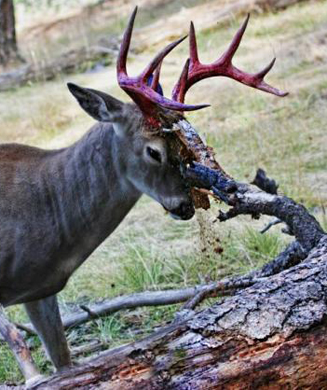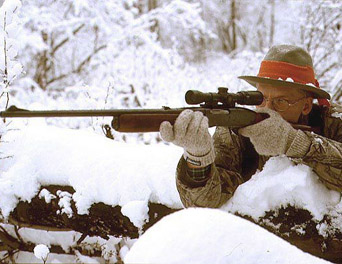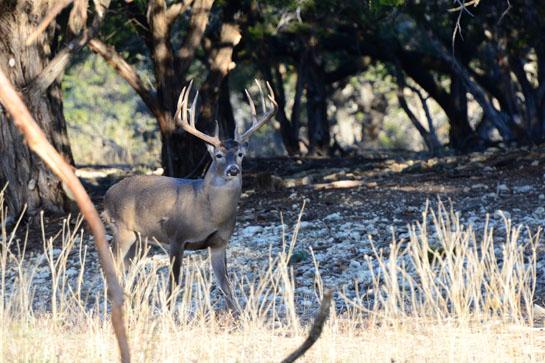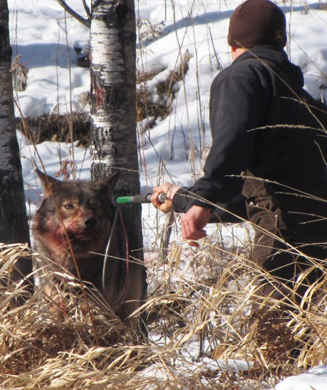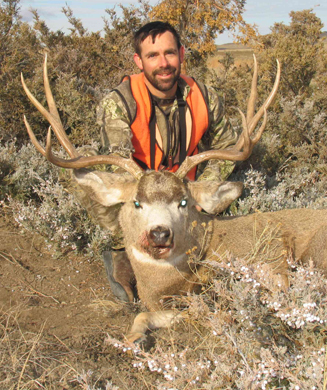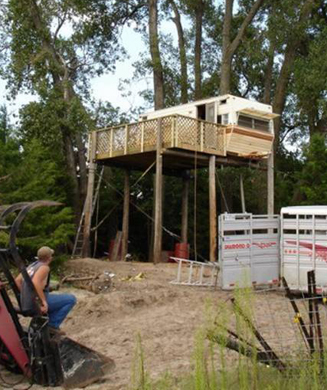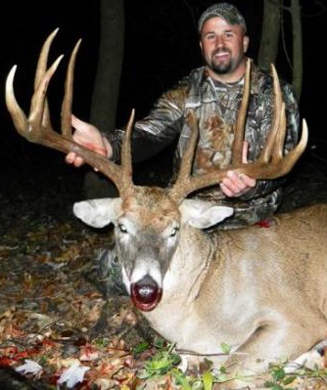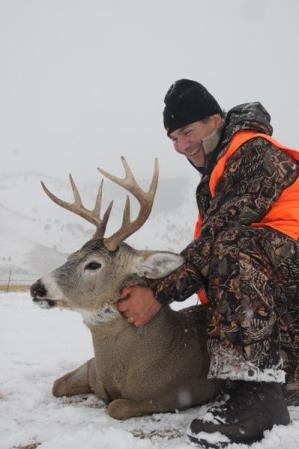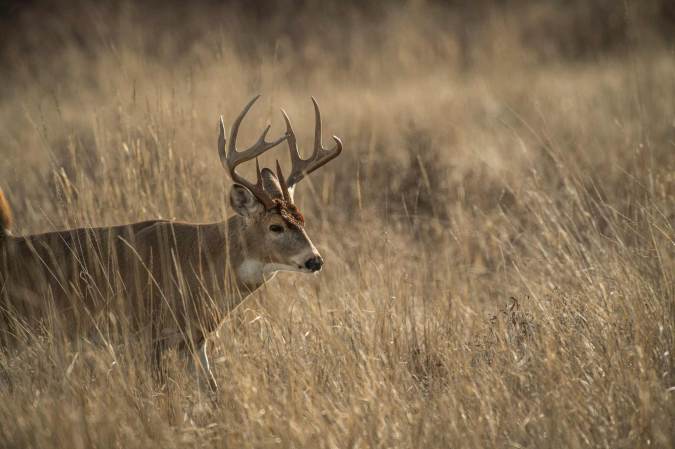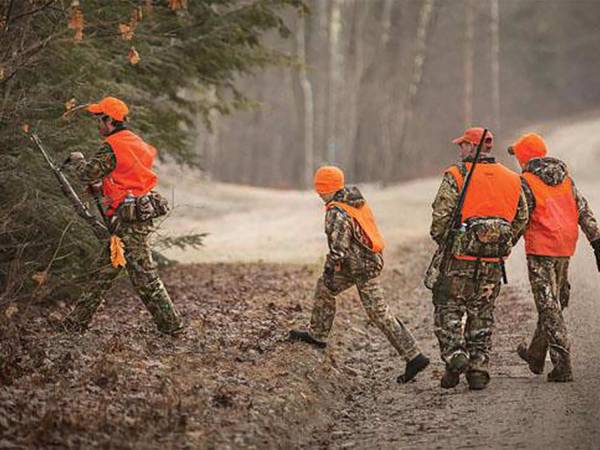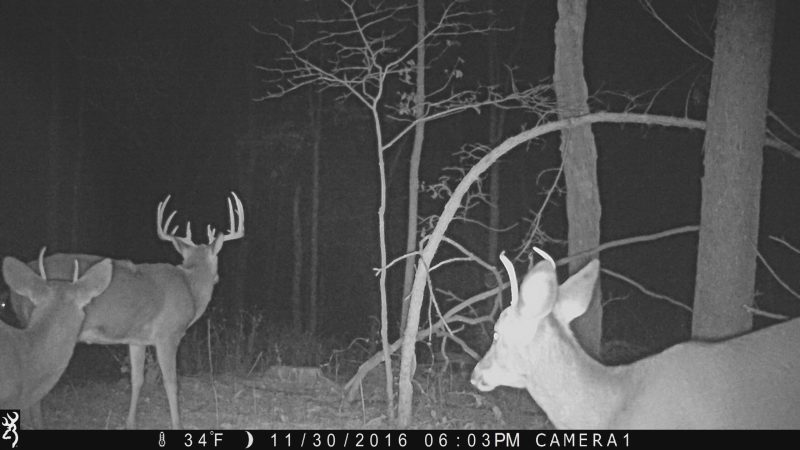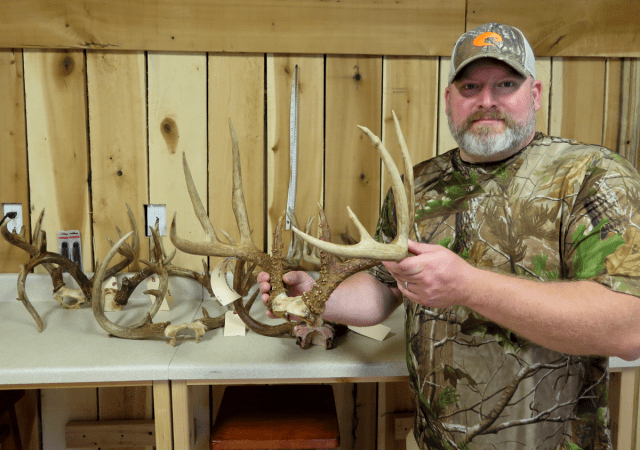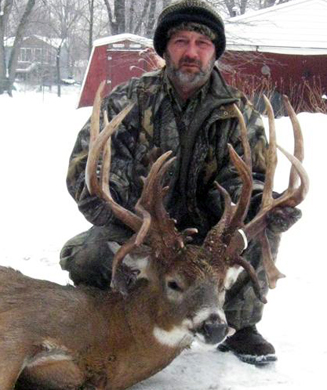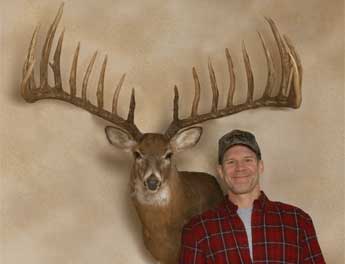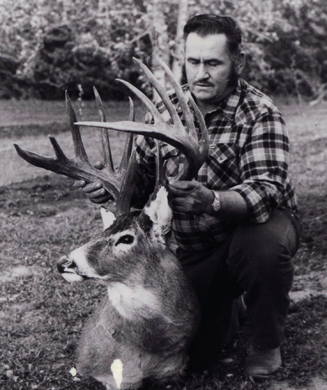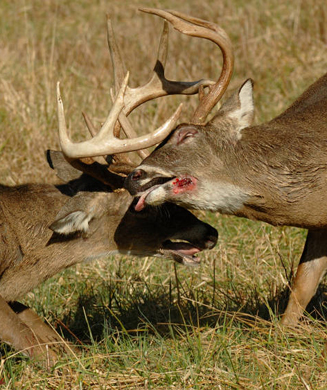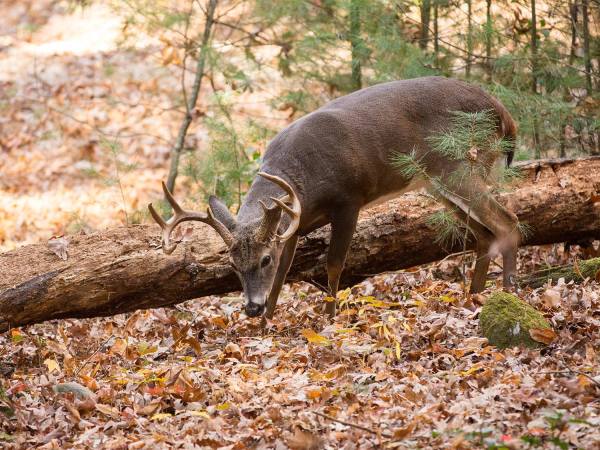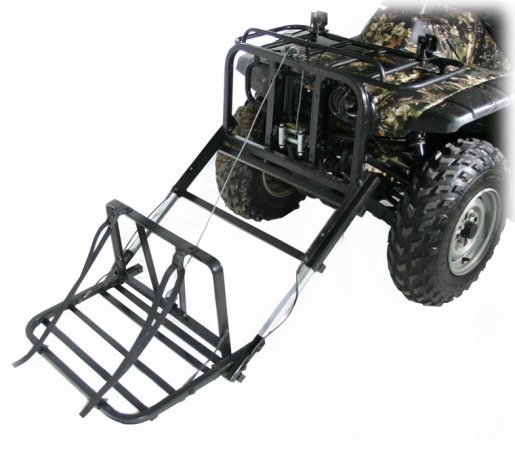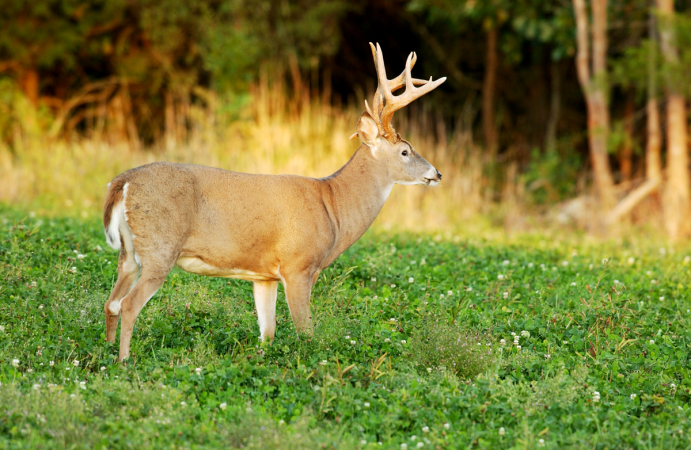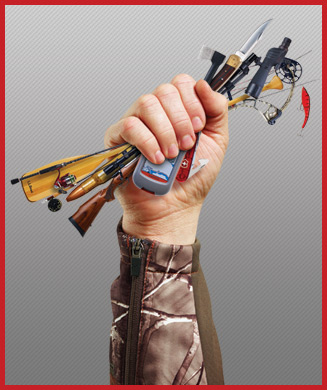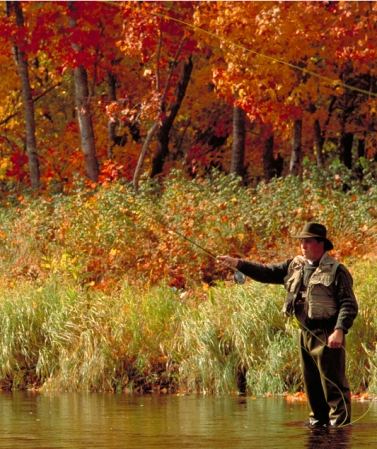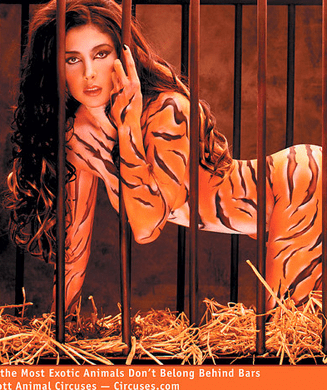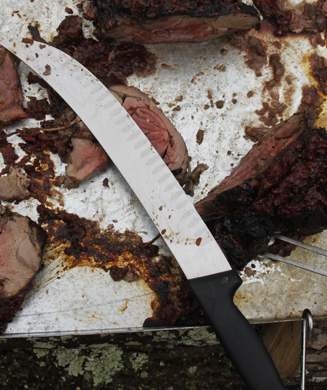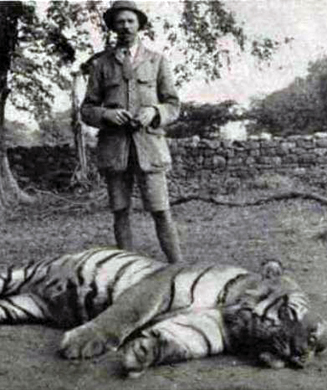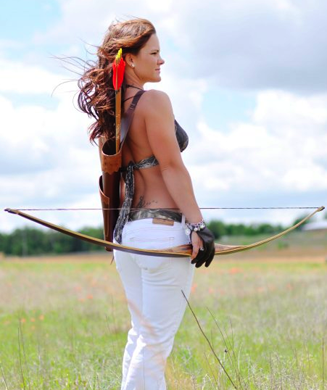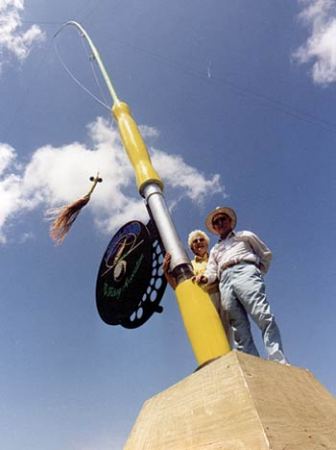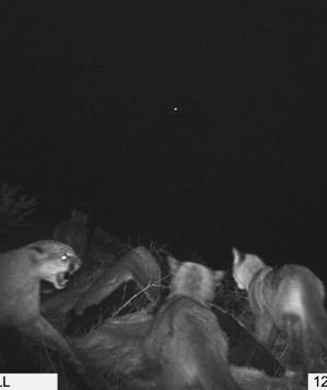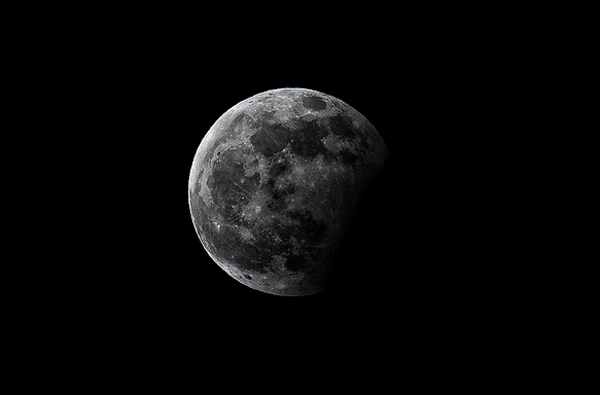
By: Jim Nelson
Winter begins on the 21st of December every year. This year it has a special meaning for serious whitetail hunters. The winter solstice is when the sun is at its peak south. What's special about this one is there's a total lunar eclipse of the full moon the day after peak north lunar ascension. Ok, before you nod off like I'm giving a science lecture, consider this: in my many hours of breaking down trophy harvest data, one day stuck when I flipped through years of data, Nov. 8, 2003! On that day there was a total (not partial or prenumbral) eclipse of a full moon. Photo: Noel Feans
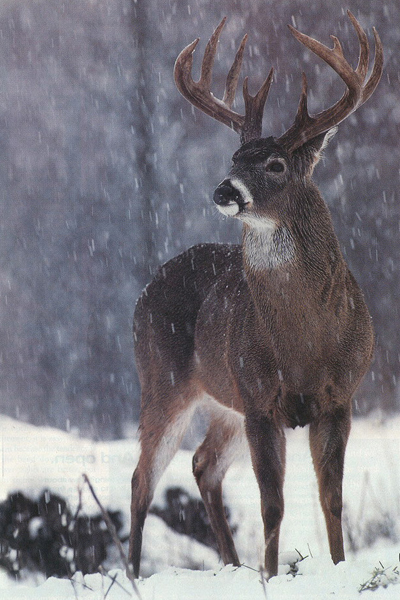
Amongst the 20 plus years of records it happened to be the #1 day all-time. In fact a two-day span around this date was off the charts for harvest. We are talking 400 P & Y bucks registered, 136 on the day of the eclipse. I decided to look into other lunar eclipses, not too many, especially total eclipses, but what I did find was one of the best (top two) days all-time for the month of December was a prenumbral eclipse. I'm not totally sure why these days have an effect on deer movement, but they do. My advice, take the 21st off, head for the field and see what happens. We would appreciate any and all feedback on your hunt if you do. And mark on your calendar Dec. 10, 2011 also, as this event will happen again, then won't repeat until Oct. 8, 2014 (at least during fall hunting seasons). Good Luck!
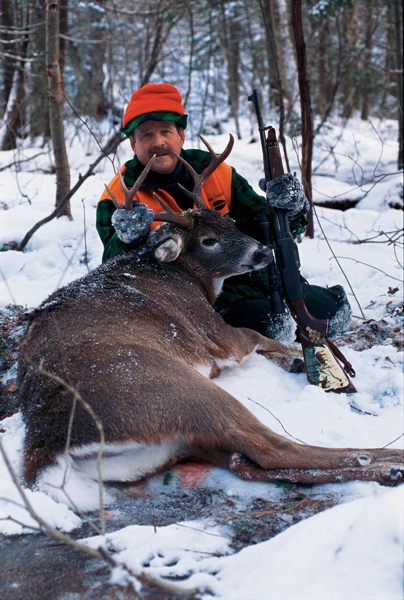
Unseasonably warm weather in early to mid November can cause rutting activity to sputter along. When this happens, a cold snap in late November or early December will reignite a deer's urge to breed. Hunters in Ohio and Iowa have witnessed this pattern the last couple of seasons and, as a result, have seen some big bucks cruising the timber looking for the last hot does. Stand-hunt during the cold snap over a major doe trail, where you might find a buck on the prowl.
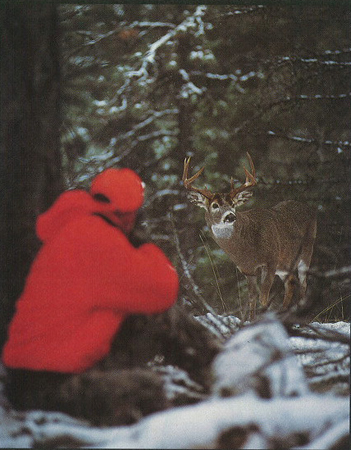
If gun hunters have swarmed your woods for weeks, you must work cover into the plan. Keep hunting the does into early December, but only on a ridge or in a draw or creek bottom laced with thick nasty brush and vines.
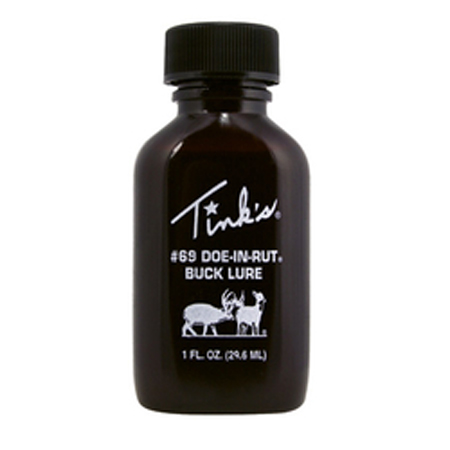
Try a dab of eau de doe near your stand. "Use a gel or solid lure," says Terry Rohm of Tink's scent products. "Rain or snow won't wash it away and a gel or solid won't freeze as fast as liquid scent."
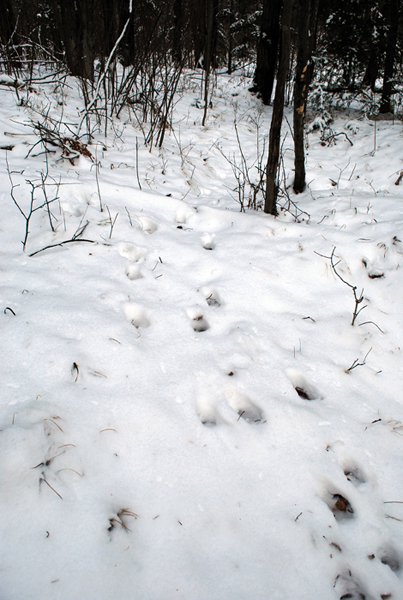
After breeding a final doe, some bucks go into seclusion for a few days, resting and licking their rut wounds. Scout for a thicket or cutover with old rubs and scrapes on the edges and trails leading into it.
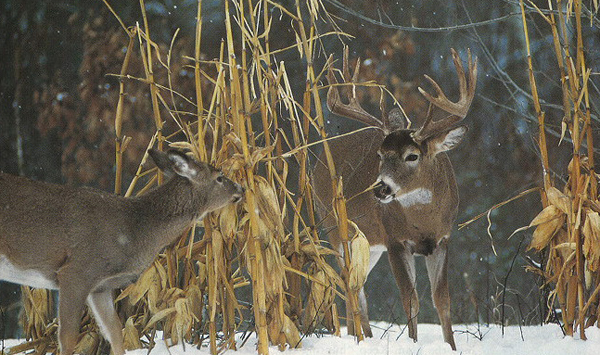
Come mid-December, bucks feed heavily to refuel their rut-thin bodies. If you hunt farm country, focus your efforts around standing corn, beans, alfalfa, milo or a similar grain.
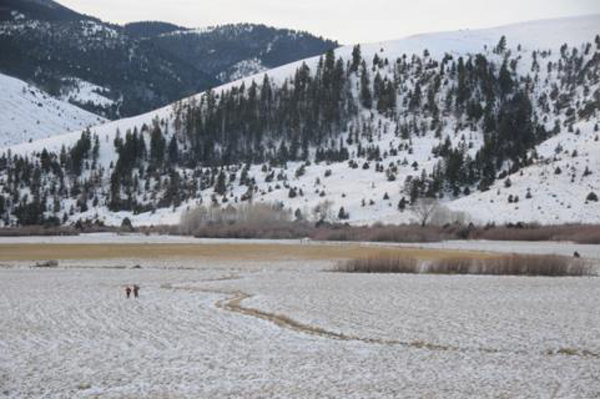
Sacrifice a couple of your last hunting days to scout. Bundle up, set up 400 yards or so off a crop field and glass for a good buck moving with does at dusk. Watch where he pops out of the timber – that will help you determine where he beds.
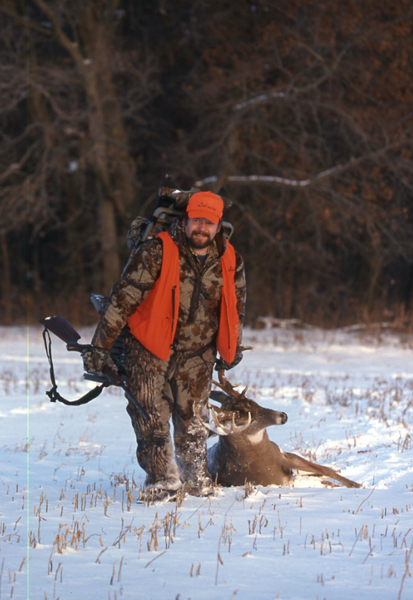
Maybe you hunt in an area that is predominately woods, or live in the far North where a foot of snow covers cut crop fields in the winter. Hunt food sources back in the timber, especially those rimmed with thick cover. Deer paw through snow to get at apples, acorns or any old mast they can find. Zero in on thickets of honey suckle or greenbrier, which offer both browse and cover.
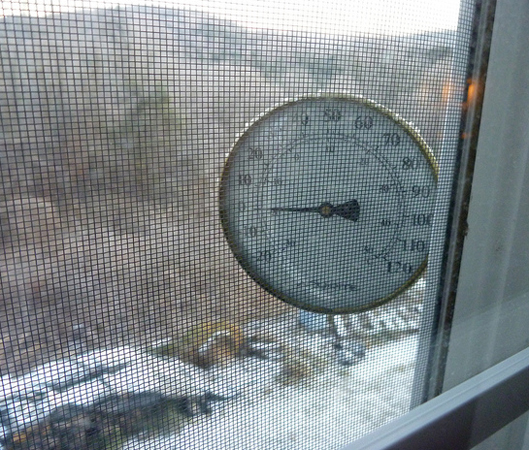
Check the weather forecast and plan your hunts around westerly or northwesterly fronts that bring light snow and drive daytime temperatures down into the 20s or 30s. That seems to be when deer move best around food sources. Photo: grongar
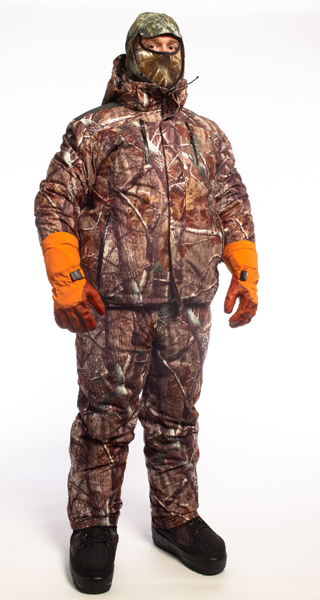
When I hunted in Nebraska last December, I prayed for cold and snow to make the bucks move. But the minus-50 wind-chills were ridiculous. I couldn't have lasted more than an hour on stand had I not worn a fleece pullover, pants and gloves lined with Gore's Windstopper fabric.
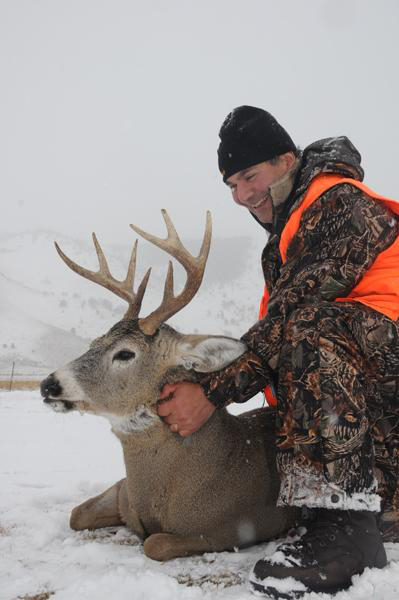
During that plains hunt we sawed out spots for our stands in cedar trees. The cedars not only helped block the wind, but they also provided cover. In the stark winter woods, a skittish buck will look up from 100 yards away and bust you if you don't hide your tree stand.
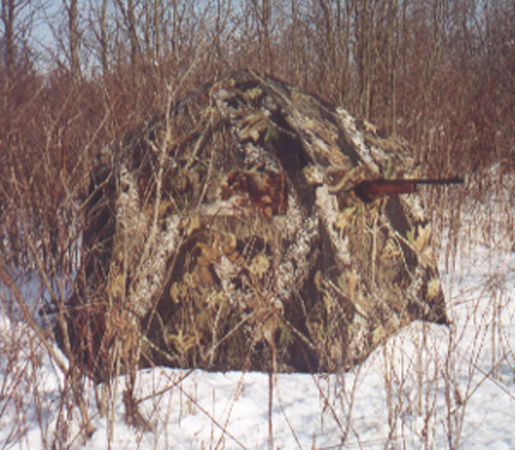
On a late-season gun hunt, you're often better off on the ground than 20 feet up a tree. You'll stay warmer, and a doe or buck is less apt to bust you, even if you fidget a bit. Build a brush blind and watch the wind and mind your scent.
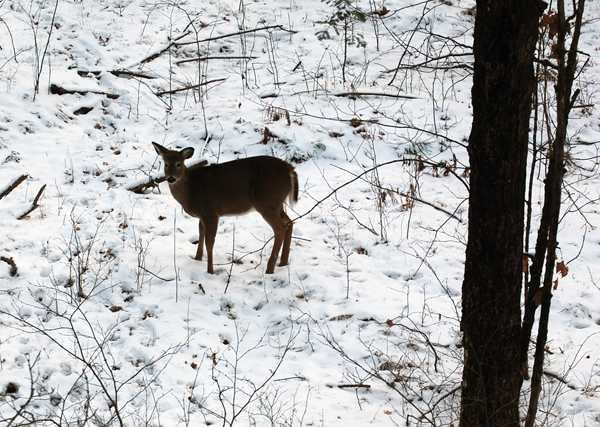
A doe flits pasty your blind, nervous and waving her flag. Did a hunter spook here? Maybe. But she might be a young doe just coming into heat or an unbred mature doe recycling into estrus. A buck might be the next deer you see.
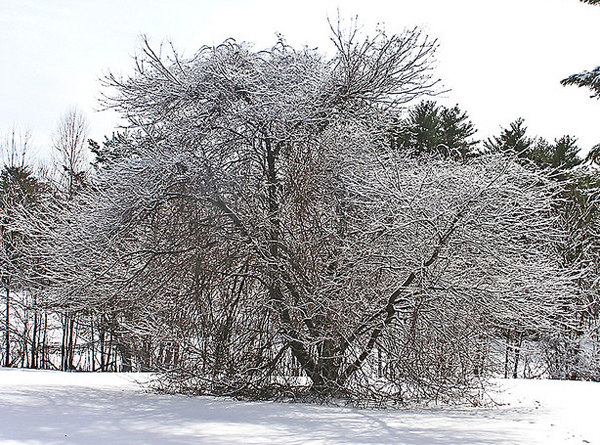
When'd deer have pretty much exhausted the mast crop and picked through the beans and corn, they can almost always find a hidden-away spot that still has a few apples lying around. Photo: Muffet
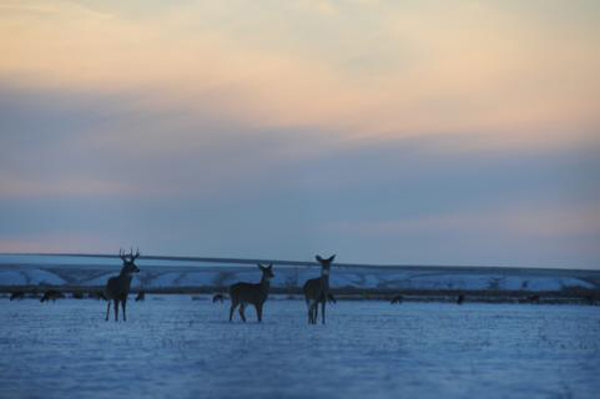
David Hale, call maker from Kentucky, doesn't rattle in December, but he keeps his grunt tube handy. "If you spot a buck moving hard toward a food source or sneaking through a thicket, a few grunts might stop him for a shot," he says.
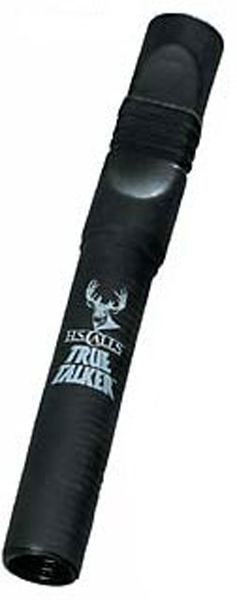
In between blowing grunts, tuck your tube inside your coat. This will keep the moisture on the call's reeds from freezing, so you shouldn't have any problem grunting if a buck trots by your stand 10 minutes later.
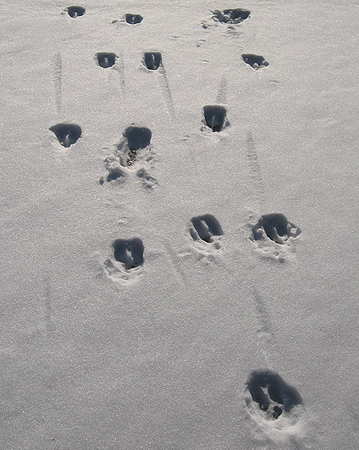
You cut big tracks in the snow – buck or old doe? A skittish buck doesn't tarry out in the open; he walks a fairly straight line between his bed and a food source. A doe, on the other hand, tends to meander, stopping here and there to browse. A mature buck's stride is longer than a doe's stride and might show "drag lines" — shallow grooves in the snow–whereas a doe is more likely to pick up her feet when walking. Photo: basic_sounds
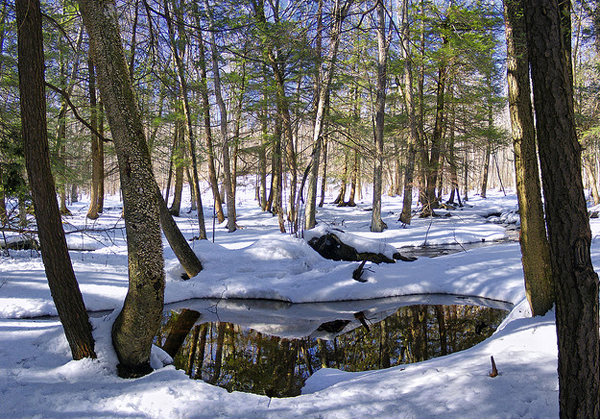
"Here in New York and across the Northeast, deer head for hemlock swamps in the winter especially those with feed nearby," says Dave Streb of Quaker Boy Calls. "Find a hemlock bottom with oak ridges on either side of it and you'll find a buck." Photo: NicolasT
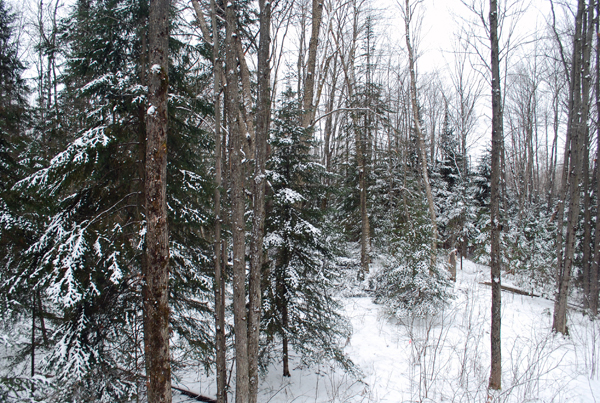
In the mid-South, be sure to check out pine plantations. "Three- to six-year-old pines are best," says Chuck Jones, co-host of the cable television show Ultimate Deer Hunting. "They provide great cover for pressured bucks, but enough sunlight filters through to grow honeysuckle, green brier and other browse. Hang a tree stand where you can look up and down the rows for deer."
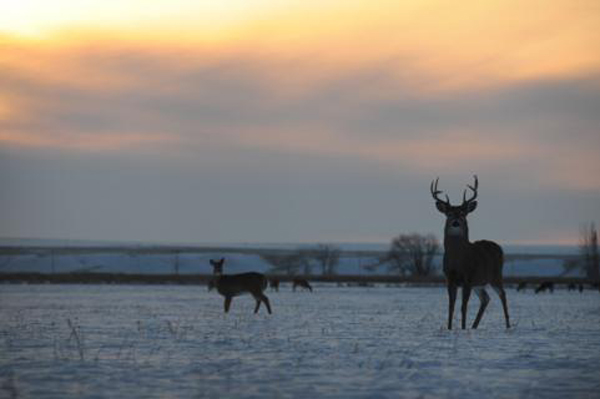
If your state has "doe days" at the end of gun season, hunting pressure will heat up again. Take a post early each morning downwind of a gnarly thicket on a ridge or in a bottom, and sit tight until lunchtime. As other hunters knock around the woods and try to bust does, they might drive a buck into your sights.
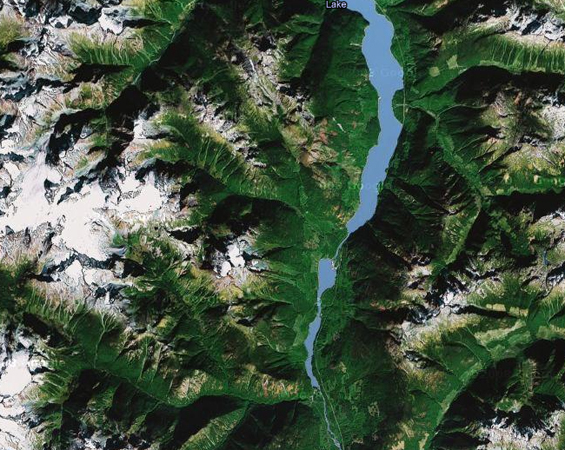
Dan Perez, who works for PSE Archery and bow hunts until the bitter end of the season in the Midwest studies aerial photos for buck refuges and then focuses his hunting efforts on them. You can get aerial images from aerial photographers, state highway departments, online at www.usgs.gov or Google Earth.
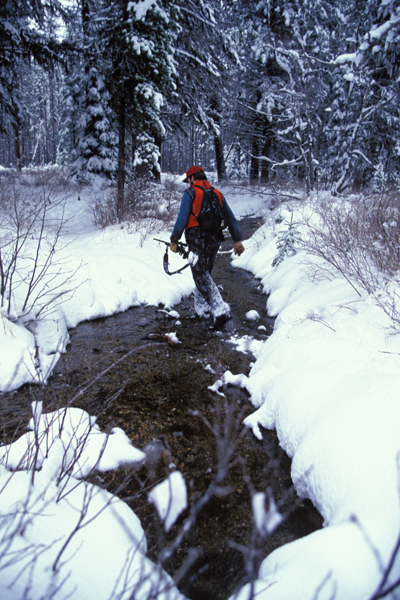
A few more tips on deer tracks: a three-and-a-half-inch-wide deer track usually belongs to a large buck. Bucks walk with their toe out, does walk with their toe facing in. A buck's rear hoofs are smaller than his front hoofs.
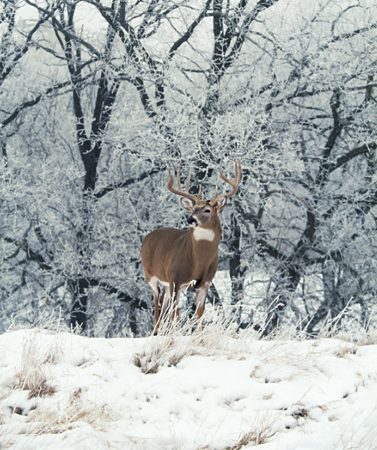
Drive logging roads to cut fresh deer tracks. When you find a track that belongs to a big buck, the hunt begins.
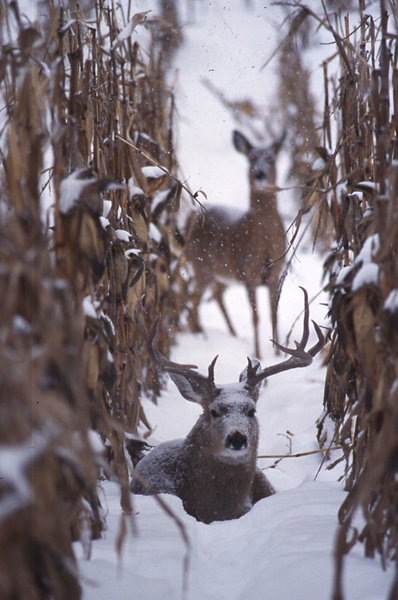
Standing corn is a magnet for whitetails once the snow flies, affording deer a steady food supply and thick security cover. Hunt near standing corn when you can find it.
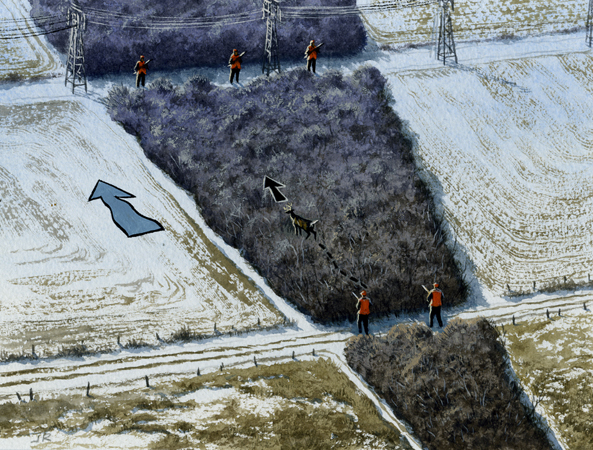
As is the case with all effective deer drives, you need to choose the correct patch of cover to drive during the right time of day and then get drivers and standers into place as quietly as possible. This simple five-man drive is designed to nudge deer out of thick bedding cover between a two-track and a power line and provides some predictability as to where the deer will go when pushed. As always, wind direction should be from the drivers toward the standers.
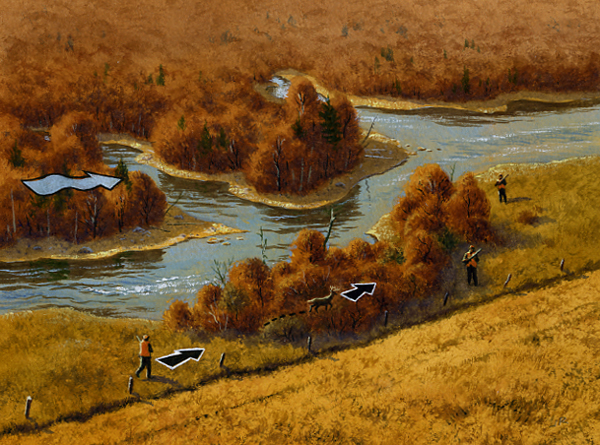
Small, isolated pockets of dense cover bordered by fields, rivers or lakes are great places to drive late in the season. Two to three hunters are all that's needed, and the terrain features funnel deer movement predictably. It's especially important that the driver on this quick-hitter drive move through the cover as quietly as a still-hunter to provide standers with a better opportunity at slow-moving deer. Spooked bucks will blow out of small pocket cover in the blink of an eye.
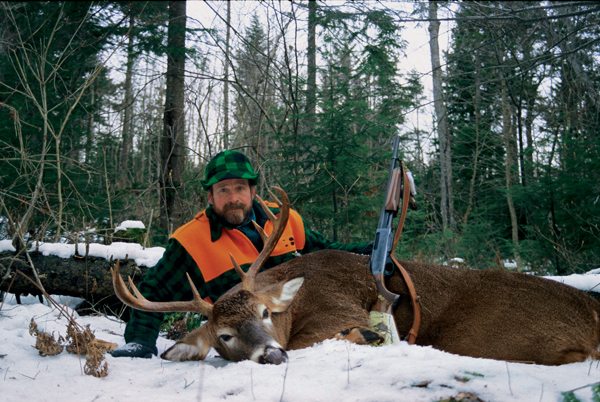
It's always a good idea for a hunt master to review drive procedure, routes and stand sites, preferably with the aid of good topo maps and aerial survey photographs. To conduct a safe drive, it's wise to have one man in charge of the operation. In addition everyone should wear plenty of blaze orange.
Winter is around the corner and snow is piling up, but it’s not too late to punch your tag! Use these tips from OL’s whitetail experts to beat the buzzer and get your buck.


